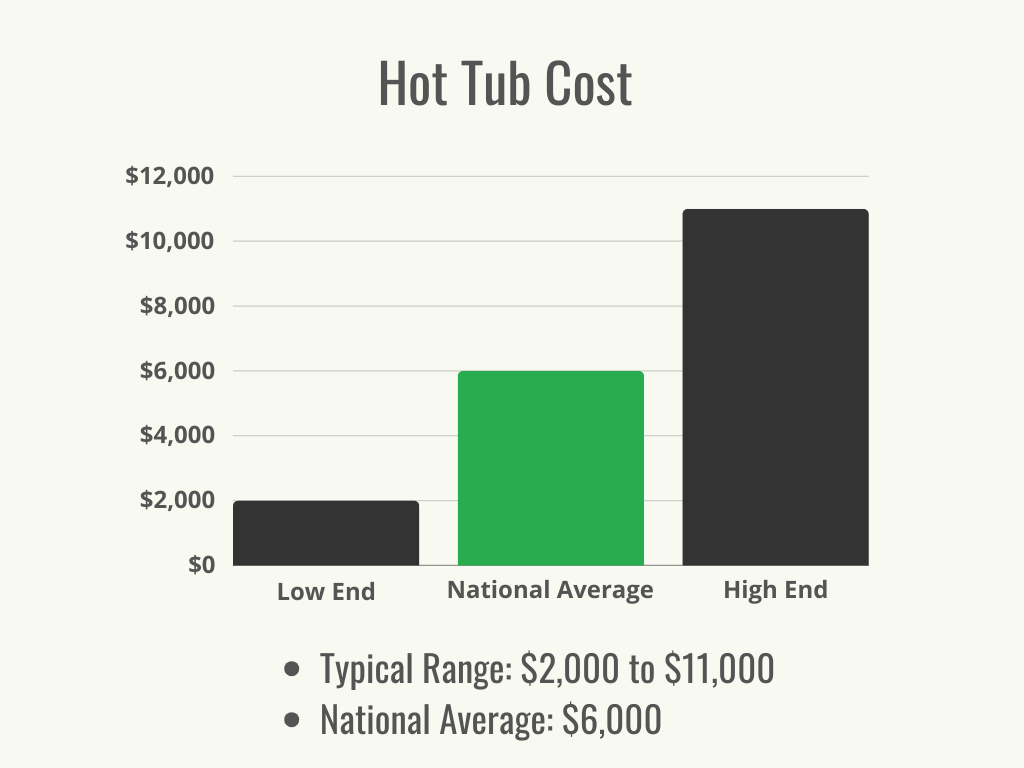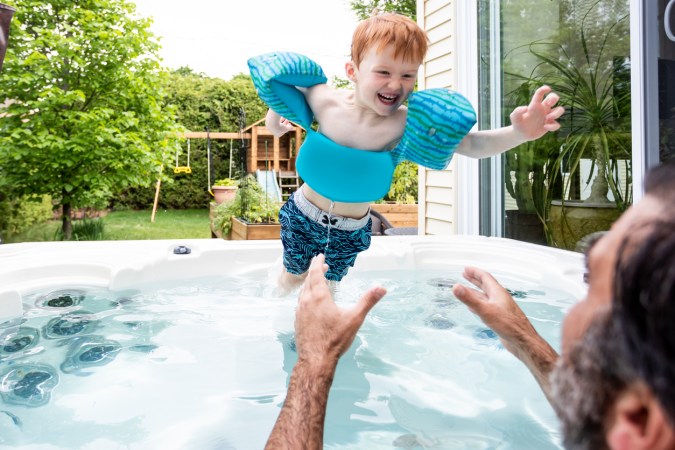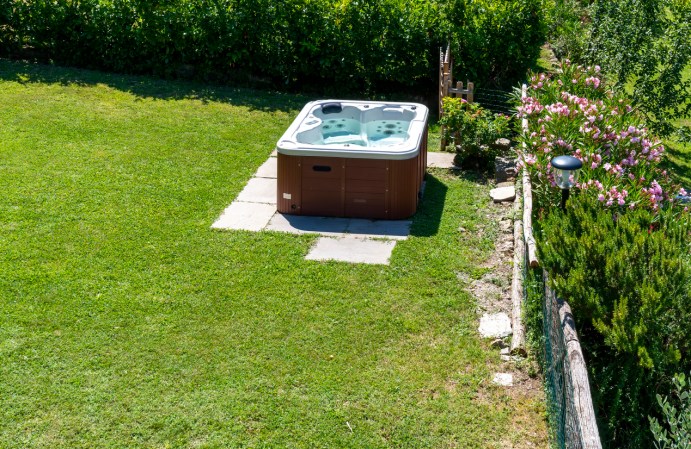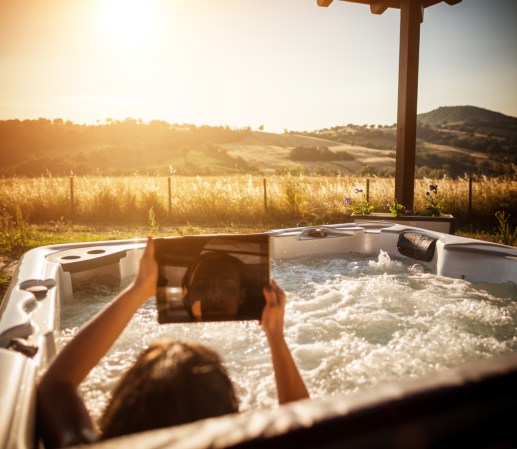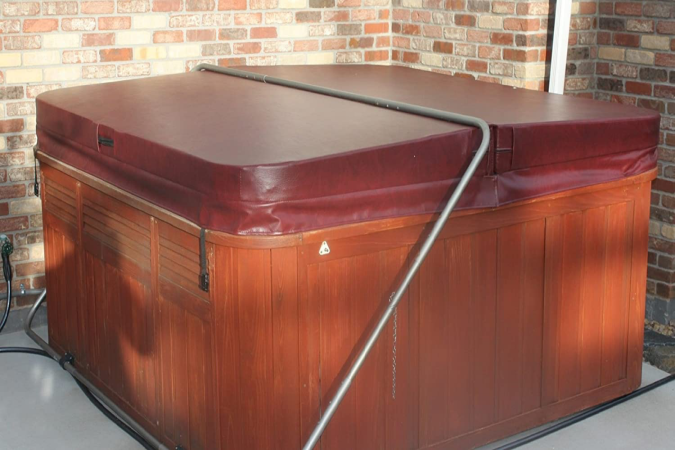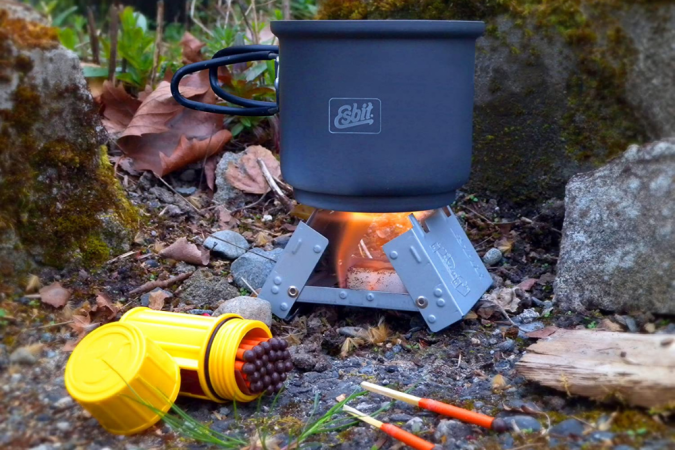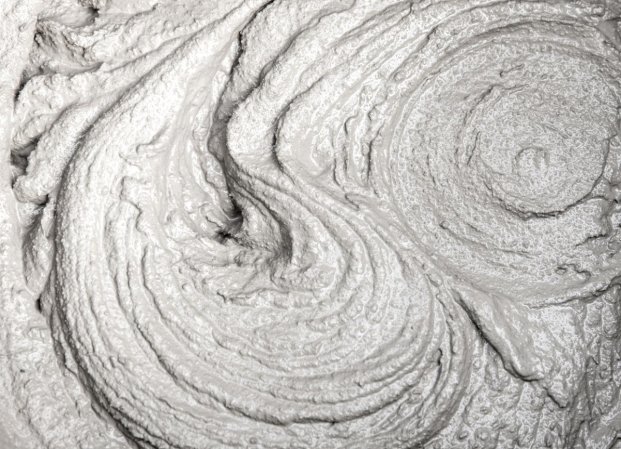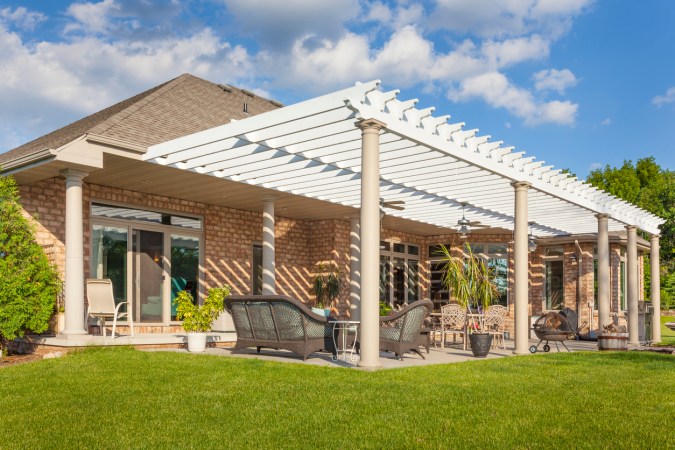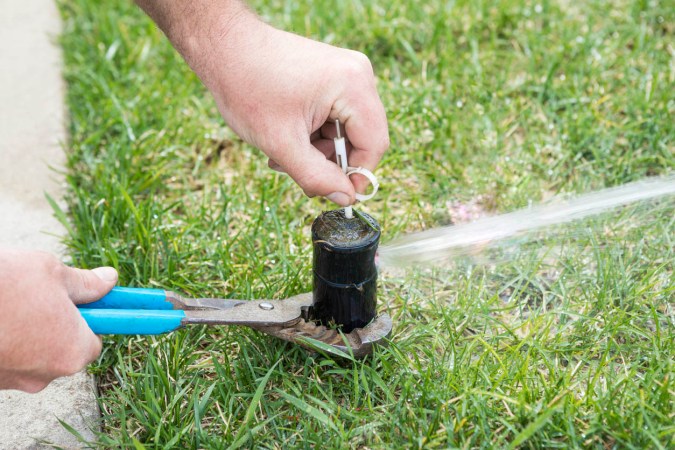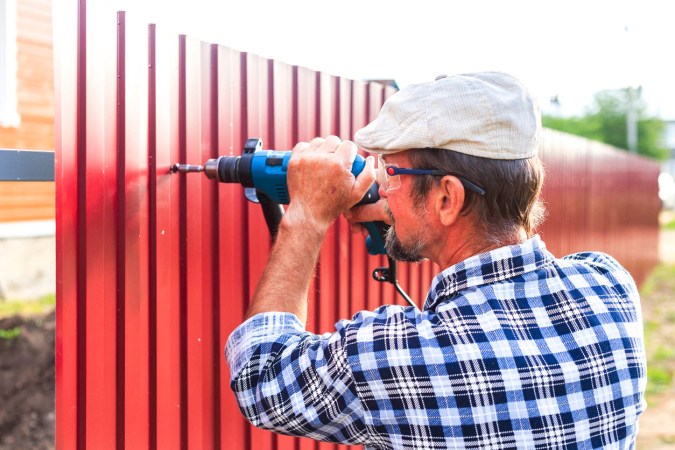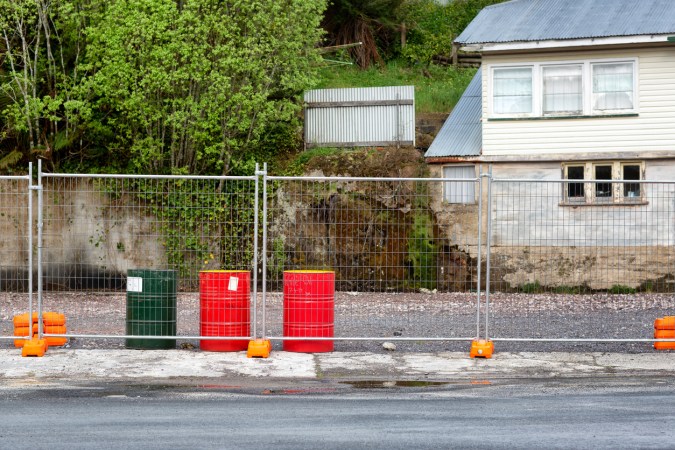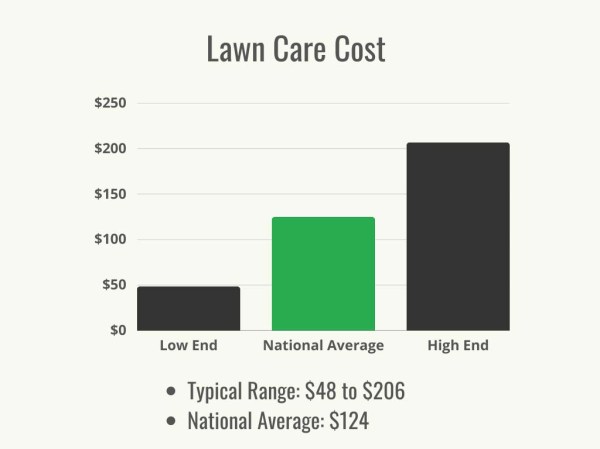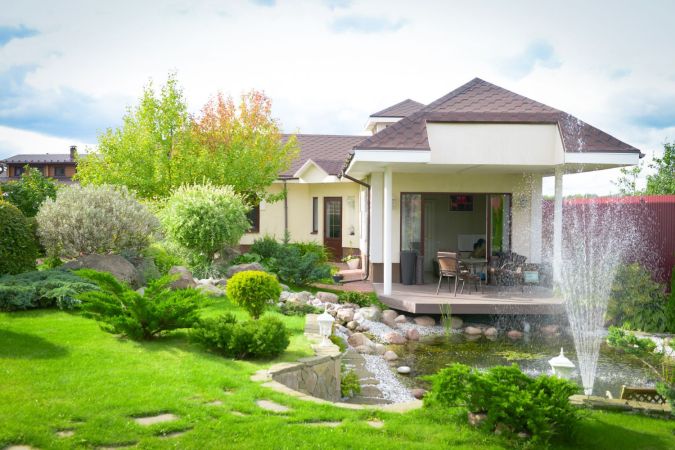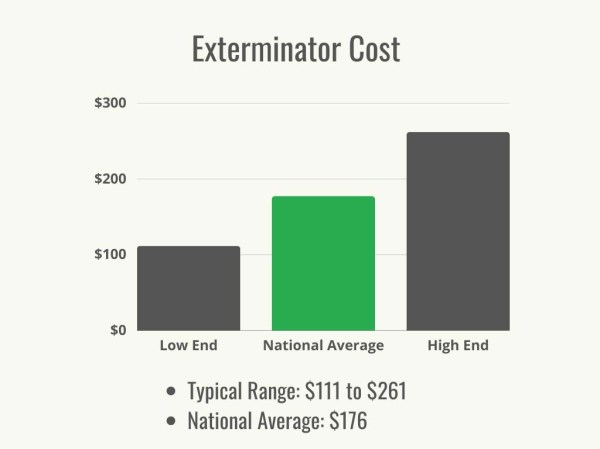We may earn revenue from the products available on this page and participate in affiliate programs. Learn More ›
Highlights
- The typical range for hot tub installation cost is $2,000 to $11,000 with a national average of $6,000.
- Cost factors for hot tub installation include the hot tub size and type, its design and material, brand, site preparation, delivery, labor, and permits.
- Some of the biggest benefits of using a hot tub include stress relief, muscle relaxation, better sleep, pain and inflammation relief, cardiovascular benefits, and improved insulin sensitivity.
- Installing a hot tub is generally not a suitable DIY project, as electrical mistakes can be dangerous and even fatal. Having a professional take care of the installation will also eliminate the risk of voiding the hot tub’s warranty.
Hot tub prices vary widely. According to Angi, most homeowners will pay between $2,000 and $11,000, or a national average of $6,000. Differences in costs stem from size, materials used, location (inground, outdoors, or indoors), site prep, energy-efficiency level, and other options that make pinning down hot tub cost difficult—although the national average of $6,000 provides a guideline of what to expect. Portable hot tubs will usually cost less than inground units, but the addition of features and accessories can level the playing field.
Factors in Calculating Hot Tub Cost
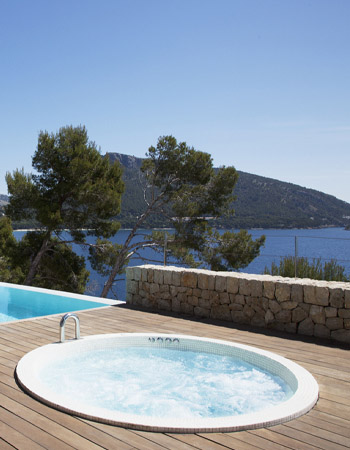
The average cost of a hot tub depends on size, features, design, materials, quality of materials, type, and location. The number of people a hot tub can accommodate will also impact the cost. The best hot tubs that are name-brand and have lots of features typically sell for more as well. Inflatable and portable styles are less expensive than permanent hot tubs.
Installation costs may vary according to the site, with an outdoor hot tub potentially requiring more site prep and thus raising the overall cost. If permits are required, that cost will also need to be factored in.
An inground hot tub will cost significantly more to install due to the added labor involved. In addition, running plumbing or electrical wiring to the location can increase the final price. Delivery is not always included in the price, but it’s a good idea to count on additional costs if a crane is required to lift and place the hot tub.
Hot Tub Size and Type
The most typical hot tub sizes are 2- or 3-person units, which generally cost $2,000 to $7,000, although luxury 2-person hot tubs can run much higher. A 4-person hot tub or 5-person hot tub typically ranges from $2,000 to $12,000, while a 6- to 7-person tub will cost considerably more ($3,000 to $15,000). It’s also worth considering that a bigger tub will require a larger pad and that delivery and installation are likely to be more expensive.
There is a surprising diversity of types of hot tubs for sale. For the ultimate in movable hot tubs, inflatable ones average as little as $400, while hard-sided portable hot tubs generally start at $3,000. Those interested in a saltwater hot tub can expect to add somewhere between $200 and $700 to convert a hot tub to saltwater.
| Hot Tub Capacity | Average Cost (Materials Only) |
| 2 or 3 people | $2,000 to $7,000 |
| 4 or 5 people | $2,000 to $12,000 |
| 6 or 7 people | $3,000 to $15,000 |
| 10 people | $5,000 to $20,000+ |
Hot Tub Design and Material
Not all hot tubs are built alike. Materials can consist of plastic, wood, or acrylic (the most common). Inflatable hot tubs are the most budget-friendly options but might not have all of the bells and whistles included in more permanent models. Rotomolded plastic tubs are lightweight and portable but not well insulated. Next up the scale are wooden hot tubs, which last a long time but require more maintenance. Vinyl-lined hot tubs consist of a vinyl liner over a concrete or wooden tub; they are inexpensive but not durable and tend to fade over time. Acrylic and fiberglass hot tubs are insulated, energy efficient, and durable, but they tend to be the most expensive.
| Hot Tub Material | Average Cost (Materials Only) |
| Acrylic | $4,000 to $18,000 |
| Inflatable | $400 to $1,500 |
| Rotomolded plastic | $2,000 to $6,000 |
| Vinyl-lined | $4,000 to $12,000 |
| Wooden | $3,000 to $10,000 |
Hot Tub Brand
While the average hot tub costs $6,000, prices can vary widely by brand. For example, Master Spas offers hot tubs at the lower end of the price range at $3,000 to $5,000. ThermoSpas prices, on the other hand, can reach as much as $22,000. Homeowners will want to weigh the style and features they’d like for their hot tub against their budget to determine which of the best hot tub brands fits their needs.
| Hot Tub Brand | Average Cost (Materials Only) |
| Bullfrog Spas | $5,000 to $15,000 |
| Caldera Spas | $3,000 to $11,000 |
| Hot Spring | $3,000 to $15,000 |
| Jacuzzi | $4,000 to $18,000 |
| Master Spas | $3,000 to $5,000 |
| Sundance Spas | $5,000 to $20,000 |
| ThermoSpas | $4,000 to $22,000 |
Site Preparation
One of the most significant factors in the cost to build a pool or hot tub is site prep. Hot tubs are heavy. Installing them outdoors will require some sort of foundation, such as a concrete slab ($2 to $6 per square foot) or pavers ($8 to $15 per square foot). It’s also common to install a hot tub on a deck; installing a new deck costs $4,100 to $11,300 in addition to the cost of the hot tub. If there is not already electrical power in the hot tub area, adding a GFCI outlet will increase the cost. Even indoor installation may call for additional floor supports. Indoor installation also means added ventilation to handle the extra moisture, and installing a fan runs about $200 to $600. Finally, if the new hot tub is replacing an old one, hot tub removal costs $150 to $650.
Delivery, Labor, and Permits
Most homeowners don’t know how to move a hot tub themselves or don’t have the equipment to do so. Delivery can cost $200 to $500, although the actual cost depends on the size and difficulty of moving the hot tub. If a crane is required to get the hot tub moved over the house to the backyard (about 5 to 10 percent of installations need this), the cost can escalate to $800 to $1,500. Using a Bobcat or removing fencing to get the hot tub situated can also elevate the cost. Moving a hot tub often requires anywhere from two to six people, who must all be paid for their time. Permits can run from $100 to $250, depending on where you live. Most cities don’t require a permit for an above-ground hot tub, but an inground hot tub will probably require a permit.
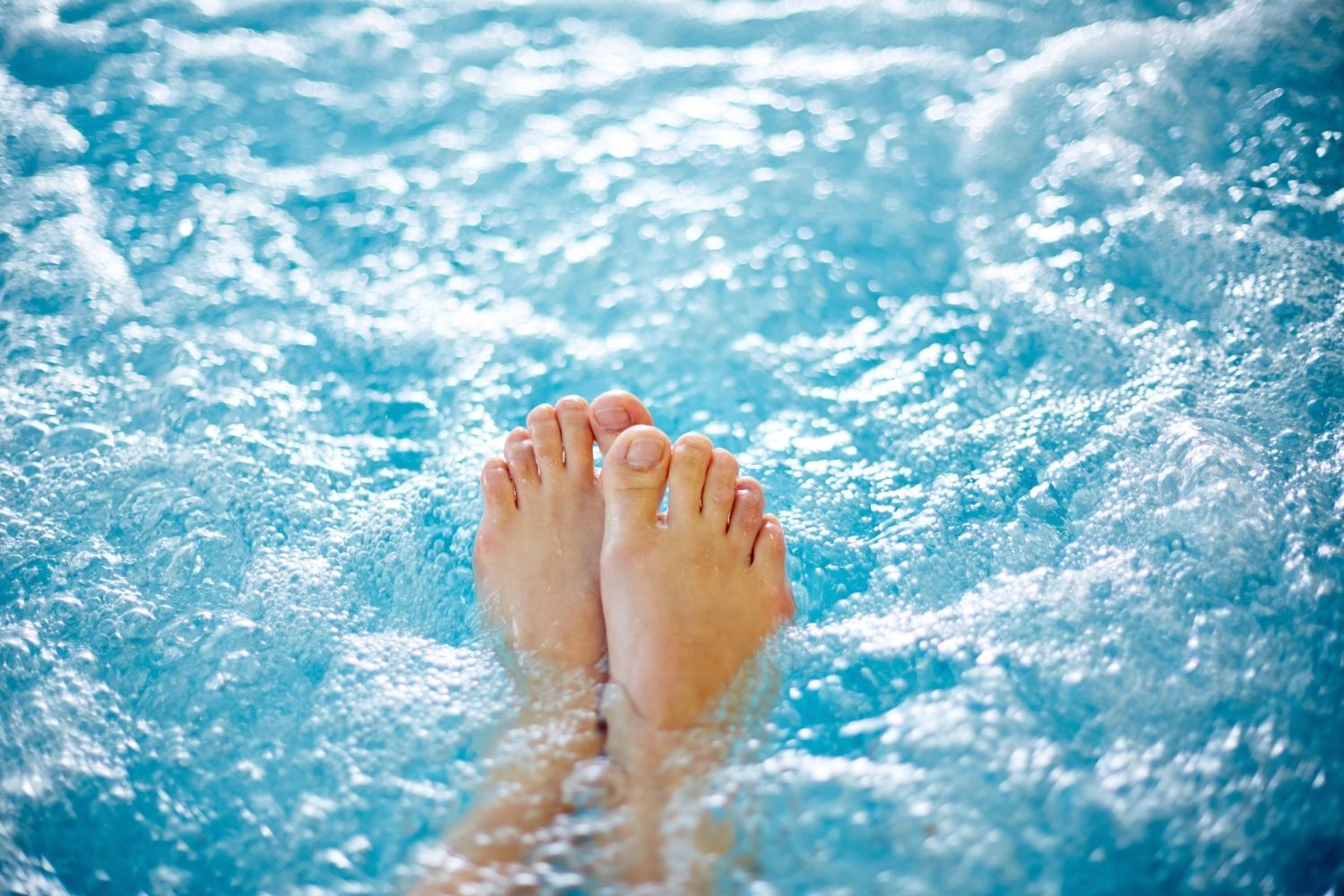
Additional Costs and Considerations
Additional costs and considerations abound when it comes to purchasing a hot tub. The type of hot tub selected, accessories, and any upgrades affect the cost of the hot tub. The bigger the hot tub, the bigger the price tag. It’s important to keep in mind that larger units will also consume more electricity and require more water, increasing expenses. Installation charges can vary depending on where the hot tub will be located and how much effort is required to set it up in the chosen site.
Delivery and hot tub installation are merely two aspects of the cost of ownership. The ongoing costs of routine maintenance and upkeep—including any chemicals and cleaning products, along with the potential expense of periodic repairs—must be factored into the total hot tub cost.
Above-Ground vs. Inground
Above-ground hot tubs range from the least expensive inflatable portable versions to costly custom units. All will require some sort of pad for support as well as access to electricity. Depending on the style and materials, they can cost $400 to $18,000. Inground hot tub costs begin at $8,000 and go up to $25,000. This is because excavation is required, usually involving heavy equipment and skilled manpower. Inground hot tubs are often next to or connected to inground pools, and they’re built in place using a rigid pre molded or flexible liner.
Add-Ons and Customizations
Numerous accessories can add fun and function to a hot tub, along with some additional costs. A filter, which costs $20 to $60 and should be changed annually, helps keep the water clean. It’s a good idea to invest in a cover and cover lift for times when the hot tub isn’t being used. A vacuum to clean the tub costs $80 to $100 and may require a special solution, which will cost an extra $15. Other convenience items include stairs, railings, and headrests.
Custom upgrades such as water features, lighting and sound systems, TVs, and other fun factors can add anywhere from $25 to $2,500 to the cost of a hot tub. Bluetooth, smart speakers, and a hot tub TV are popular, if pricey, upgrades. Even a refinished wood exterior or new cover can be considered an upgrade.
| Add-On | Average Cost (Materials Only) |
| Cover lift | $150 to $250 |
| Decking | $30 to $60 per square foot |
| Entertainment system | $500 to $2,500 |
| Filter | $20 to $60 |
| Headrests | $20 to $60 each |
| Lighting | $25 to $60 per light |
| Speakers | $30 to $150 |
| Stairs and railings | $150 to $500 |
| TVs | $400 to $2,000 |
| Umbrellas | $200 to $800 |
| Vacuum | $80 to $100 |
| Water features | $300 to $2,000 |
Running Costs
Homeowners who are interested in installing a hot tub may be wondering, “How much does it cost to run a hot tub?” Hot tub use can add as much as $20 to $30 to your electrical bill each month, depending on climate, usage, model, and size. Some of the higher-end hot tubs are more energy efficient and will actually use less electricity than some entry-level models that aren’t well insulated. However, hot tub electrical installation such as a new electrical panel costs $400 to $1,800. If it’s necessary to add or upgrade an outlet, there may be an additional charge of $150 to $300.
Maintenance and Repairs
Depending on the model, annual hot tub maintenance costs to clean and replace filters or add chemicals can run from $500 to $1,000. In general, a hot tub should be drained and refilled every 3 to 4 months because of chemical buildup. Heavy usage could decrease the interval.
Many homeowners learn how to clean a hot tub so they can take care of this task themselves. The water chemicals need to be checked two to four times a week, using a test strip to verify the proper pH, alkalinity, calcium, and sanitizer. A monthly supply of test strips typically costs about $20. The filter needs to be replaced annually and costs $20 to $60. The unit itself should be cleaned every other month. You can hire a company to do this work for $300 per visit to save time. If any part of the hot tub breaks down, the cost of repair depends on the issue at hand but tends to average $160 to $500.
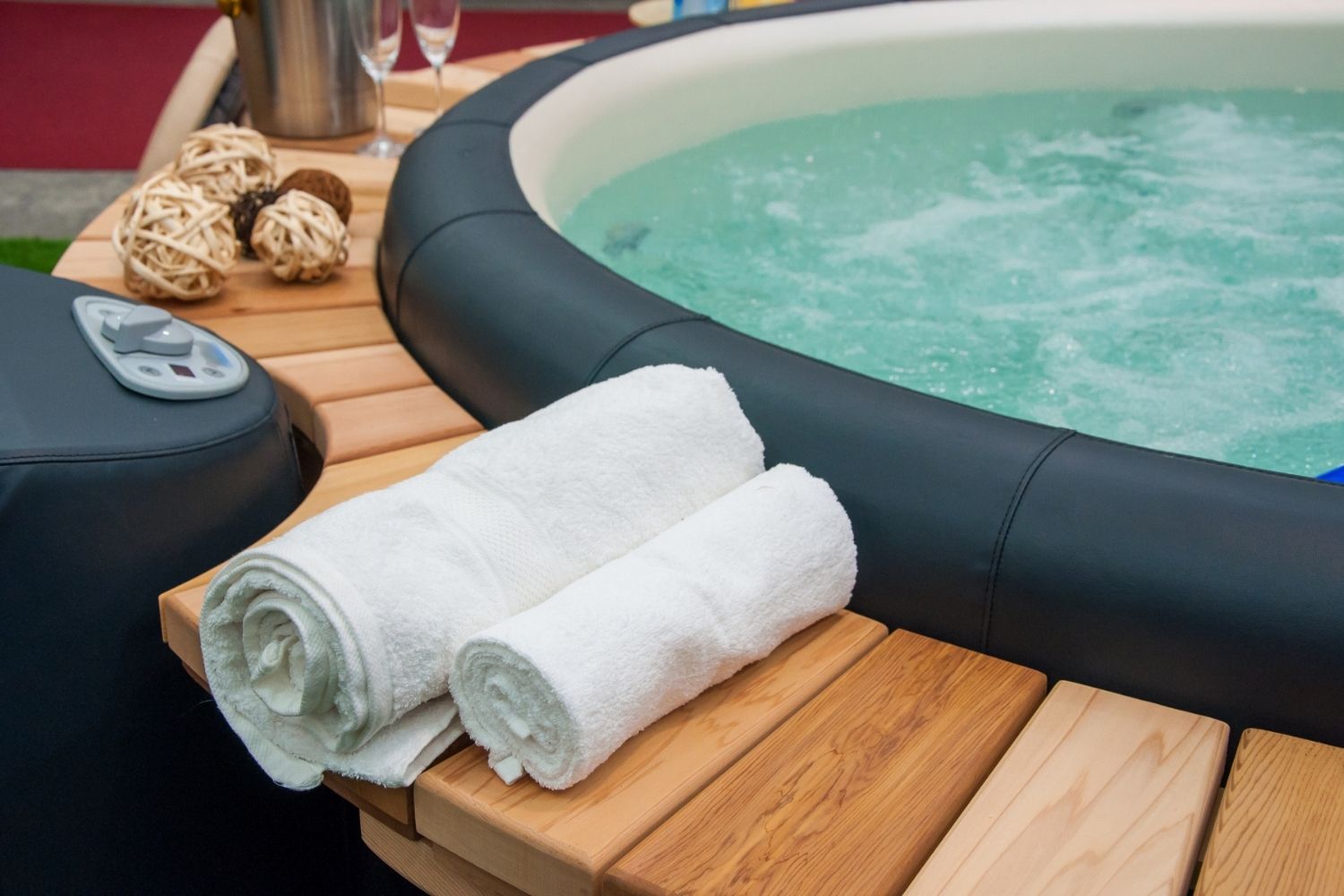
Hot Tub Cost by Type
Hot tub prices aren’t a one-size-fits-all proposition, and there is a surprising variety of units on the market for varying tastes and budgets. Whether a homeowner wants a basic hot tub to soothe their muscles after a long day, or a luxury model that is suitable for entertaining, there are plenty of options on the market to choose from.
| Hot Tub Type | Average Cost (Materials Only) |
| Entry-level | $2,500 to $5,000 |
| Inflatable | $400 to $1,500 |
| Luxury | $11,000 to $35,000 |
| Portable | $3,000 to $10,000 |
| Premium | $8,000 to $11,000 |
| Saltwater | $200 to $1,500 for a saltwater generator |
| Value-level | $5,000 to $8,000 |
Entry-Level Hot Tub
Entry-level hot tubs are some of the most budget-friendly options that are not portable or inflatable. They are typically plastic and use a relatively small amount of electricity. However, since these hot tubs are not well insulated, they may cost more to run. Entry-level hot tubs cost $2,500 to $5,000.
Inflatable Hot Tub
Even the best inflatable hot tubs cost less than their more permanent cousins: usually $400 to $1,500. While easy to install, they are known as being less reliable and comfortable, as well as less durable than hard-sided units. They have a lifespan of about 5 years. An inflatable hot tub can be placed on either an insulated base or the ground.
Luxury Hot Tub
Luxury items can easily double the top end of that price range. Luxury features include waterfalls, lighting and sound systems, therapeutic jets, water purification systems, and designer exteriors. All of them will increase the cost, so most luxury hot tubs run between $11,000 and $35,000.
Portable Hot Tub
A hard-sided portable hot tub typically costs somewhere between $3,000 and $10,000. These energy-efficient, durable units offer the widest variety of sizes, colors, features, and seating configurations. Although they can be moved to a new location, they are heavy and require an insulated base or pad to support them.
Premium Hot Tub
Not quite considered “luxury,” premium hot tubs have extra features such as filters, lights, and jets while having a slightly lower cost than the most expensive models out there. Premium hot tubs are also relatively energy efficient, which makes them less expensive to run than some of the cheaper options. Premium hot tubs cost between $8,000 and $11,000.
Saltwater Hot Tub
Saltwater hot tubs can add as much as $200 to $700 on to the price because they require a specific saltwater generator. These generators can even run as high as $1,500. However, because the system converts dissolved salt into chlorine, it can reduce maintenance. Additionally, salt is less expensive than chlorine and reduces the number of chemicals needed for upkeep.
Value-Level Hot Tub
With a relatively low installation cost of $5,000 to $8,000, value-level hot tubs are permanent models that don’t break the bank. They often come with jets and other appealing features and are typically made from acrylic. Unfortunately, they are not well insulated, which can result in expensive running costs.
Benefits of Installing a Hot Tub
Hot tubs provide numerous benefits that can improve your life, one of them being the therapeutic, muscle-relaxing effects of the jets. Still, there are other health advantages, such as improved circulation and blood pressure, stress relief, and reduced pain, to name a few.
The benefits of hydrotherapy have been known for thousands of years. Beyond the long-term health benefits, hot tubs can make people happy. Like swimming pools, they are a source of entertainment and a place for family and friends to gather, have parties, and enjoy one another’s company.
Stress Relief
There’s something relaxing about warm, bubbling water on the body that sends stress packing. Add soft lights, soothing music, and aromatherapy to the mix to boost the effects. Massaging jets promote relaxation, easing stress and tension. The warm, moving water also relieves pressure on the joints, taking away the pain.
Muscle Relaxation
Tense, tight, or achy muscles feel the relief the jetted water provides in a hot tub. Just as a soak in the hot tub after hard physical labor can ease aches and pains, a dip in the hot tub before exercising can also warm up those muscles. Exercising while not warmed up can result in injury or strain, so this is a preventive measure.
Better Sleep
Hot baths can promote deeper, more restful sleep, according to some studies. Hydrotherapy has long been known as a way to improve sleep quality; a soothing soak before bedtime can put a person right to sleep. Hot tubs can be beneficial for sleep, especially if combined with aromatherapy.
Pain and Inflammation Relief
Using a hot tub can ease muscle pain and lower back pain. It can also alleviate symptoms of fibromyalgia, osteoarthritis, and rheumatoid arthritis. By reducing joint inflammation, relaxing in a hot tub can help improve range of motion and restore flexibility. Hydrotherapy can relieve the pain and inflammation of arthritis and other conditions through the combination of heat, massaging action, and buoyancy that takes the weight off the joints. Because soaking in a hot tub relaxes muscles, joints, and tendons, pain often dissipates. The jets can also relieve stiffness, resulting in more flexibility and range of motion.
Cardiovascular Benefits
A relaxing soak in a hot tub can raise your heart rate and lower your blood pressure. According to Harvard Medical School, immersing oneself in hot water has a beneficial effect on blood pressure; it even goes so far as to indicate that a daily hot bath might help reduce the risk of cardiovascular disease by 28 percent.
Improved Insulin Sensitivity
According to research, hydro- and thermal therapy may improve insulin sensitivity and help people manage their diabetes. Hot tubs have been proven to be an effective treatment tool for Type 2 diabetes and are routinely used as therapy for people with this illness. It can also aid in burning calories because a 1-hour soak can burn as many calories as a 30-minute walk. Weight loss can also help control Type 2 diabetes.
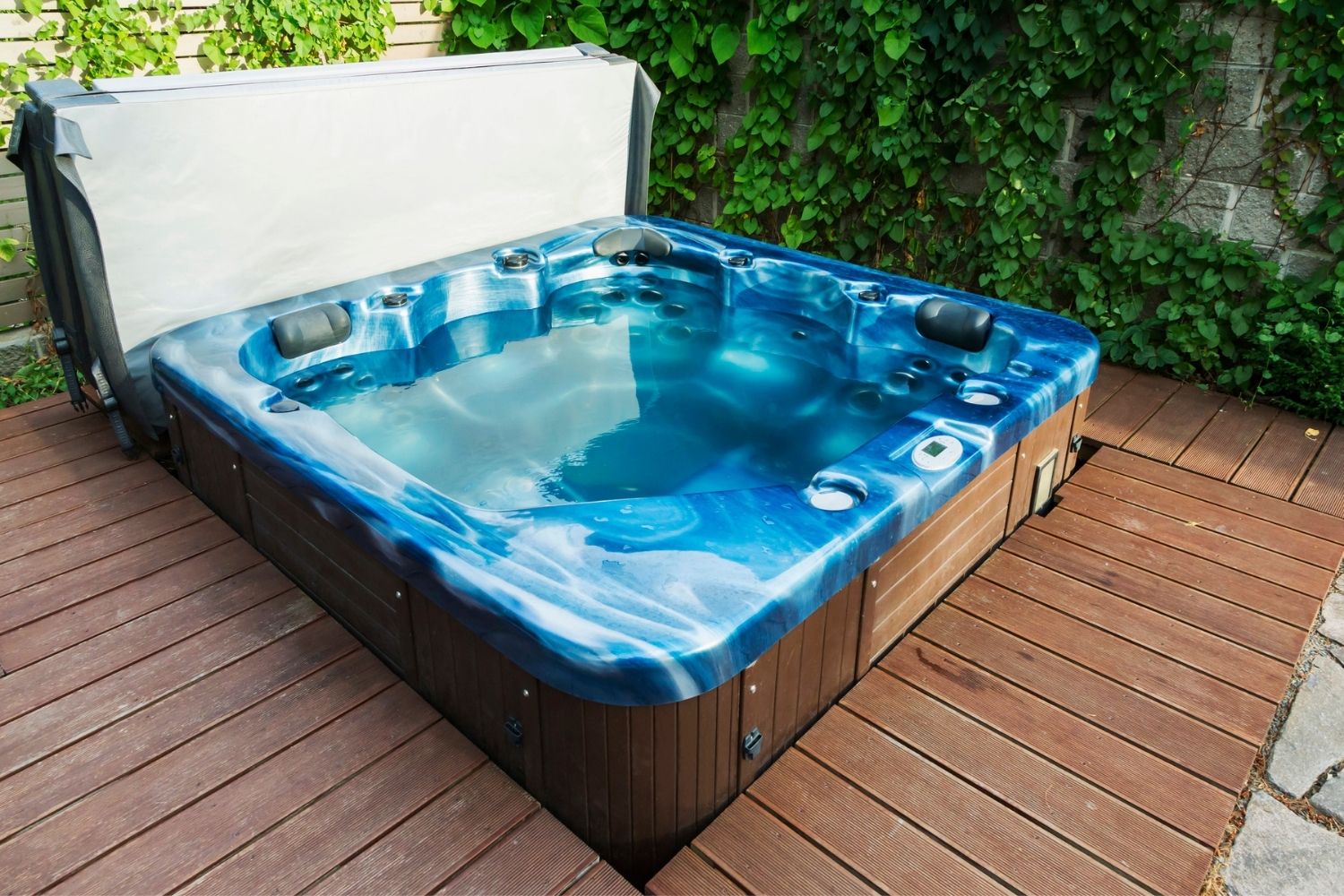
Hot Tub Installation: DIY vs. Hiring a Professional
Installing a hot tub is not something most people want to do on their own; it doesn’t make a good DIY project. Not only is it a complicated job, but DIY installation might void the warranty. With electrical wiring and plumbing involved, it’s best to leave it to the professionals to install.
No matter who does the electrical wiring for a hot tub, it will have to meet code. Hiring a licensed electrician will ensure the wiring is done correctly, which will eliminate fire hazards. Professionals know how far the hot tub is legally required to be from the electrical panel, and they know the voltage needed.
Proper installation and wiring ensure that all components are functioning as they should, without residual damage resulting from incorrect wiring. This could also save money because equipment failure could ensue from faulty wiring and need to be replaced. And, of course, it’s a safety issue. Bad wiring could short out, spark a fire, or injure people.
Beyond electrical concerns, it’s challenging to move a heavy hot tub and get it accurately placed. The ground will need to be leveled, a pad or support created, and the tub situated. Adding it to an existing pool, putting it in the ground, or connecting it to a deck requires precise measurements and movements. Additional plumbing is not typically required, but if it is needed for the chosen model it’s a good idea to let one of the best plumbing services like Mr. Rooter or Roto-Rooter take care of this part of the project.
Choose a licensed and bonded installer and then check out their rating and reviews. If they have references or a portfolio of their work on previous jobs, even better.
How to Save Money on Hot Tub Cost
Everyone has a budget, and everyone likes to save money. You can enjoy the benefits of a hot tub without breaking the bank. So many options exist. And it may seem counterintuitive, but hiring a professional installer may be another way to save money on a hot tub. Similarly, some dealers offer free (or inexpensive) installation and delivery as part of a turn-key package deal.
- Shop around. Get multiple estimates from reputable companies. Google “hot tubs for sale near me” to find places that sell and install hot tubs.
- Buy a smaller hot tub. The tub is typically the most expensive part (as opposed to installation or maintenance), and smaller tubs usually cost less than bigger ones.
- Compromise on features. Forgo some features and accessories, skip the name brand, or consider a less expensive portable option.
- Look for discounts. It’s often possible to find coupons and end-of-season sales. If you can pay in cash, you’ll avoid finance charges—and just maybe you can negotiate a small discount, too.
- Look into tax write-offs. If you have a medical condition, check to see if you can write off a portion of the cost on your taxes. You may need a prescription from your doctor for this.
- Consider a used hot tub. While you can always check Craigslist or Marketplace for an inexpensive model, you might feel more confident purchasing one from a used hot tub dealer because it will come with refurbished certification and perhaps a limited warranty.
Questions to Ask About Hot Tub Installation
Before you choose one of the best pool installation companies to put in a hot tub, there are some questions you’ll want to ask. While you’ll be able to get some of the answers up front, other questions may not be as readily answerable. Installation costs vary depending on the size of the hot tub, the chosen location, and other factors. Routine maintenance depends on the type of hot tub, usage, climate, and other factors.
- How much will the installation cost?
- Do you require payment all at once or broken up into multiple payments?
- Does the installation cost include delivery?
- Do you guarantee your work?
- Do you have references?
- How much experience do you have?
- What kind of plumbing is required?
- Do you use subcontractors? How many people will be working on this job?
- Will it be safe?
- Do you have a lot of service calls on this model, and are replacement parts readily available?
- Do I need any additional ventilation (for indoor hot tubs)?
- Will you be in charge of acquiring all permits?
- Can this be plugged into an existing outlet, or does it need to be hardwired?
FAQs
Hot tubs provide relief for several medical conditions and also provide a space for families and friends to gather to have fun. What’s more, by implementing a few backyard hot tub privacy ideas, homeowners can reap the benefits from the comfort of their homes out of sight of nosy neighbors.
But for those who intend to get a hot tub, there are important things to know about them, such as maintenance and cleaning, the cost of ownership (including power and water), and general safety issues. It’s essential to understand all the ramifications of a hot tub purchase to get the most out of it.
Q. What’s the difference between a hot tub, spa, and whirlpool tub?
Many people use the terms “hot tub” and “spa” interchangeably. Hot tubs used to be made of wood, but today are often called spas, just like the acrylic versions. Some consider a hot tub an above-ground spa, with a spa tub being typically inground, sometimes attached to an inground pool. A whirlpool tub is an indoor tub with jets.
Q. Is it expensive to have a hot tub?
It can be expensive to have a hot tub, with prices on custom high-end models reaching as much as $35,000. Portable and inflatable models cost considerably less money. However, there are added costs, including electricity, water, cleaning, and maintenance and repair to consider. Maintenance costs can reach $1,000 annually, and repairs can cost as much as $500, depending on the repair needed.
Q. How much does a hot tub cost per month?
Electricity alone can cost $20 to $30 a month—even more for an inground tub. Water to refill it after cleaning is almost negligible, depending on water costs where you live. Chemicals and test strips to check pH and other levels will run an average of $20 per month. Cleaning products will run about $15 unless you hire a company to do the job for you. In that case, expect to pay about $300 per cleaning.
Q. How long can you leave water in a hot tub?
If the tub is tightly covered, the water should stay fresh for at least 2 weeks with proper filtration and sanitation. Much longer, though, and it can begin to grow algae, bacteria, or biofilm. That’s why experts recommend that hot tubs should be drained about every 3 months (longer for saltwater tubs: up to 12 months). Homeowners can learn how to drain a hot tub themselves or hire a professional for regular cleaning.
Sources: Angi, HomeAdvisor, HomeGuide, Fixr, Healthline

